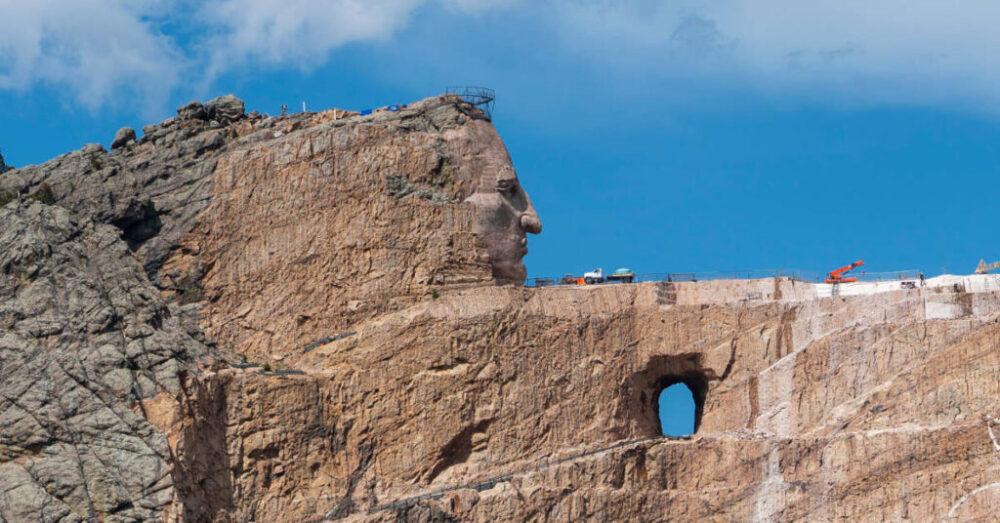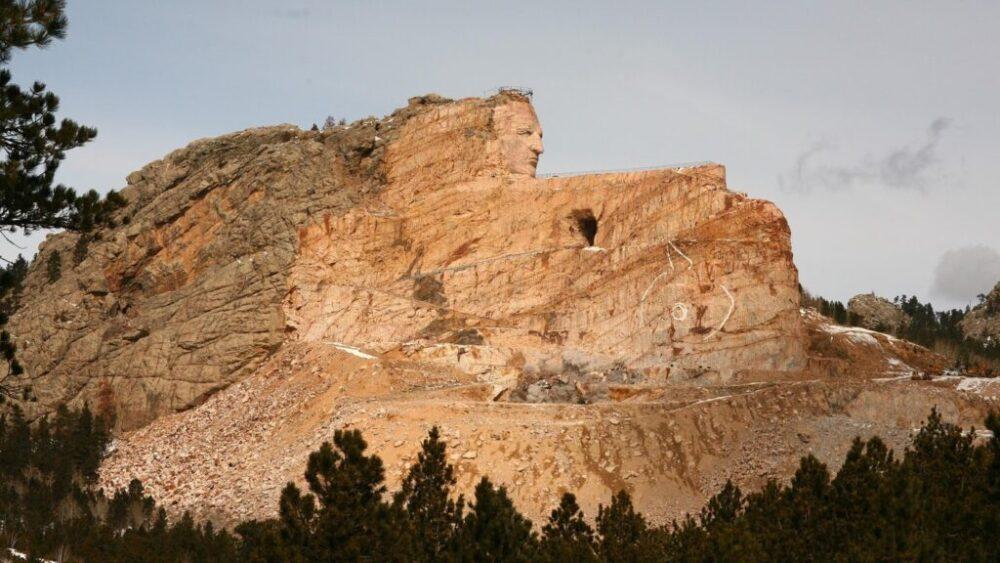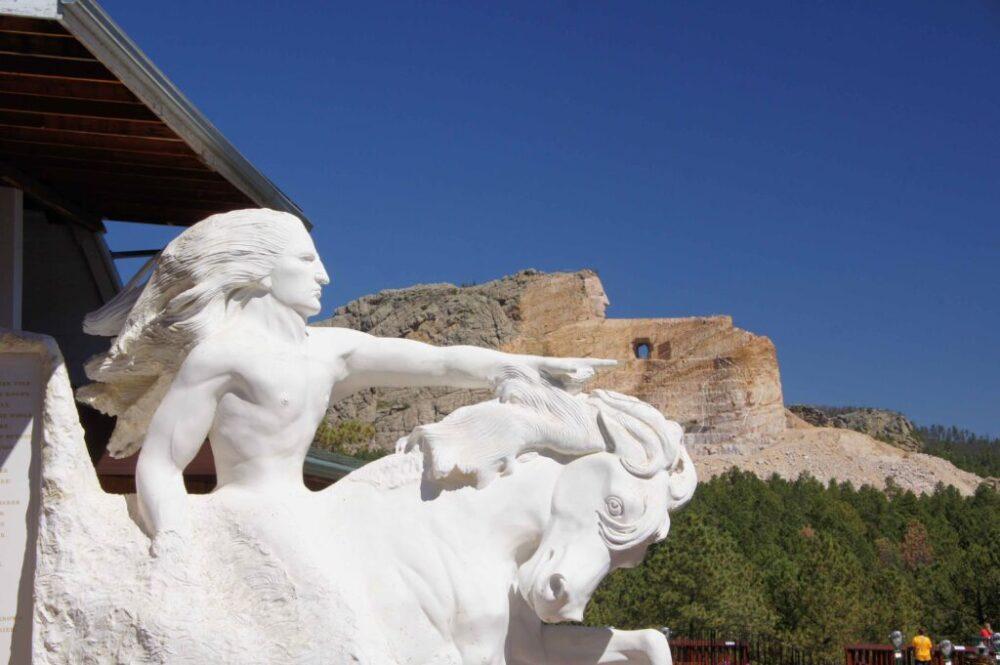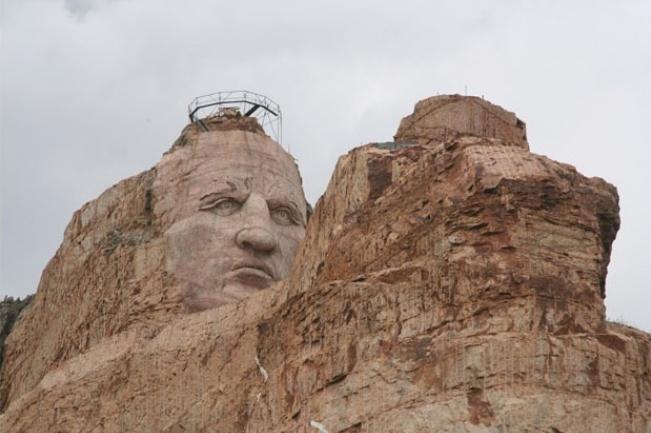In South Dakota, a monument to Native American hero “Crazy Horse” is slowly taking shape
A Native American hero is commemorated with a monument located approximately 17 miles from Mount Rushmore. Crazy Horse was an Oglala Lakota leader who fought in many of the most famous American Indian Wars battles, including the Battle of the Little Bighorn, where he killed General Custer. He worked hard to save Oglala land, and in the end, he negotiated a government concession. Crazy Horse was born on December 4, 1849, and his personal life is unknown. Nonetheless, he is a well-known Native American historical figure, and a massive memorial honors him today. That is, once it is finished.
Construction on the site in South Dakota’s Black Hills began in 1948. In the finished product, Crazy Horse is supposed to be riding a horse with his arm outstretched, but for the time being, his 87-foot face is carved with little contour to the rest of his body and his horse. When finished, it will be bigger than Mount Rushmore’s presidents. Visitors can learn about Crazy Horse’s history at the memorial, which is still open to the public.
Sculptor Korczak Ziolkowski created this piece. After his death in 1982, his family continues to run the memorial and foundation. They remain committed to Ziolkowski’s desire to operate independently of the government. “He believed that in this world, you could do anything. “Nothing is impossible if you work hard enough and pay the price,” Ruth Ziolkowski said before her cancer death in 2014. The family does not abandon the memorial and continues to put Ziolkowski’s idea into action. They did, however, make a few changes to account for the difficult rock.
“He always said you had to work with Mother Nature because she would always beat you. “That’s why we’re working with the engineers, and we’ll be putting bolts in for support, but the bulk of the mountain needs to stand on its own,” sculptor’s daughter Monique Ziolkowski explains.
The current Lakota leader, Henry Standing Bear, commissioned the statue from Ziolkowski in 1939. Mount Rushmore was nearly finished at the time, and Standing Bear wished to honor a Native American leader in the same way. He chose Ziolkowski because of his well-known work on the Mount Rushmore monument. “My brother chiefs and I want the white man to know that the red man has great heroes, too,” Standing Bear said. Crazy Horse’s descendants, on the other hand, were not sought for approval, despite Lakota culture’s requirement for consensus on such matters.
“They don’t respect our culture because we didn’t give someone permission to carve the sacred Black Hills where our burial grounds are,” said Elaine Quiver, a Crazy Horse descendant. “They were there for us to enjoy and for us to pray. But it was never intended to be carved into images, which would be disastrous for all of us. The more I think about it, the more I realize it’s a betrayal of our Indian culture. Not Crazy Horse alone, but all of us.”
Others argue that a massive statue would be inappropriate for the humble Crazy Horse. Despite the carving, supporters of the memorial praise it for its educational heritage museums, medical training center, on-site Native American university, and sponsorship program for Native American high school students. Many people also praise the monument for providing an excellent history lesson and for bringing a Native American hero to public attention.
The memorial is still unfinished, and its completion date is unknown. Ruth Ziolkowski, on the other hand, had used her late husband to respond to those who mocked glacial development. “‘Go slowly so you do it correctly,’ he advised. And, while I would prefer it to move faster, there are so many things to do well that it takes time.”
According to the website of the Crazy Horse Memorial Foundation, there is a lot of hope for future progress, even if it will be delayed. The current goal of the foundation is to “guard and conserve the culture, tradition, and living heritage of North American Indians,” and the sculpture is just one of their many projects, which include museums, medical training institutes, and a university.
Hits: 14











